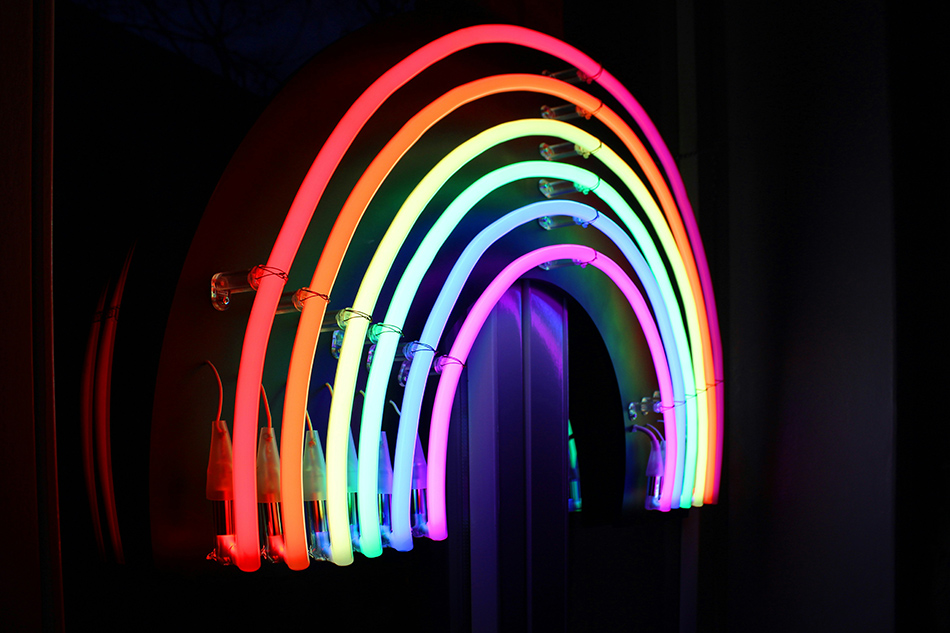Time:2025-05-22
In an era where sustainability and cost-effectiveness are paramount, energy-efficient neon tube lights are redefining commercial signage. These advanced systems combine the iconic visual appeal of traditional neon with cutting-edge technologies to reduce energy consumption, lower operational costs, and support eco-conscious branding. This article explores how energy-efficient neon signage is transforming businesses, the innovations driving its adoption, and best practices for maximizing its impact.
The Shift Toward Energy-Efficient Signage
Traditional neon signage, while visually striking, often incurs high energy costs and environmental concerns. Energy-efficient neon tubes address these challenges by:
Reducing Power Consumption: Leveraging LED technology to replicate neon’s glow with significantly lower energy use.
Extending Lifespan: Durable components designed to withstand continuous operation, minimizing replacementss
Aligning with Regulations: Meeting stringent energy efficiency standards and green building certifications (e.g., LEED, BREEAM).
Businesses adopting these solutions not only cut costs but also bolster their reputation as environmentally responsible brands.

Core Technologies Behind Energy-Efficient Neon
Modern energy-efficient systems incorporate innovations that enhance performance:
LED Neon Flex: Flexible LED strips housed in silicone or PVC tubes, offering bendable designs without fragile glass.
Smart Controllers: Programmable timers, dimmers, and motion sensors to optimize energy use during off-peak hours.
Efficient Power Supplies: Advanced drivers that minimize energy loss and heat generation, ensuring stable performance.
Solar Compatibility: Integration with solar panels for off-grid or hybrid energy solutions in outdoor signage.
These technologies enable businesses to maintain 24/7 visibility while prioritizing sustainability.
Strategic Advantages for Commercial Use
Cost Savings: Lower electricity bills and reduced maintenance expenses compared to traditional neon or incandescent lighting.
Brand Differentiation: Customizable colors and designs that align with brand aesthetics while conveying eco-conscious values.
Durability: Weather-resistant and UV-stable materials for outdoor signage in harsh climates.
Versatility: Suitable for diverse applications, from storefront logos to wayfinding systems in corporate campuses.
Applications Across Industries
Retail: Eye-catching window displays and entrance signs that remain illuminated without inflating operational budgets.
Hospitality: Energy-efficient lobby signage or outdoor hotel branding that enhances curb appeal sustainably.
Corporate Offices: Illuminated logos or directional signage in office complexes, supporting green initiatives.
Public Sector: Municipal signage for parks, transit hubs, or cultural landmarks, balancing visibility and energy conservation.
For example, a global coffee chain reduced its carbon footprint by transitioning 500+ locations to LED neon signage, achieving a 60% drop in energy costs.
Trends Shaping the Future of Neon Signage
Circular Design: Recyclable materials and modular systems that simplify repairs and end-of-life recycling.
IoT Integration: Smart signage that adjusts brightness based on ambient light, weather, or foot traffic data.
Biophilic Aesthetics: Combining neon with natural materials like wood or stone for eco-friendly visual harmony.
Carbon-Neutral Production: Suppliers offsetting emissions through renewable energy investments or reforestation programs.
Best Practices for Implementation
Partner with Specialists: Collaborate with suppliers experienced in energy-efficient neon to ensure compliance and quality.
Prioritize Maintenance: Regular inspections to clean surfaces, check connections, and update software for smart systems.
Educate Stakeholders: Highlight energy savings and sustainability benefits in marketing materials to engage eco-conscious customers.
Case Studies: Success in Action
Fashion Retailer: A boutique replaced its traditional neon signs with LED equivalents, cutting energy use by 70% and attracting eco-aware shoppers.
Airport Wayfinding: An international airport installed solar-powered neon signage, reducing grid dependence while guiding travelers effectively.
Restaurant Chain: A fast-casual brand used dimmable neon tubes to create ambiance during dining hours, lowering energy costs without compromising aesthetics.
Overcoming Adoption Challenges
Upfront Investment: Highlight long-term ROI through energy savings and durability in client proposals.
Aesthetic Concerns: Demonstrate LED neon’s ability to replicate traditional neon’s warmth and vibrancy.
Technical Training: Provide staff with resources to manage smart controls and troubleshoot minor issues.
Conclusion
Energy-efficient neon tube lights for signage represent a win-win for businesses seeking to balance visual impact, operational efficiency, and environmental stewardship. By embracing LED innovations, smart controls, and sustainable practices, companies can future-proof their branding while contributing to a greener economy.
For optimal results, prioritize suppliers offering certified, customizable solutions and educate customers on the dual benefits of cost savings and eco-responsibility. In a competitive market, energy-efficient neon isn’t just a lighting choice—it’s a strategic brand statement.